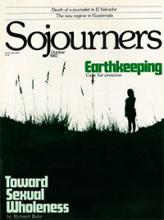March 17,1982, four Dutch journalists--Koos Koster, Jan Kuiper, Joop Willemse, and Hans Terlaag--were shot and killed in El Salvador. The four were on assignment for the Dutch Interchurch Television Network (IKON) to produce filmed portraits of two Salvadoran families; one a middle-class family residing in San Salvador, the other a campesino family residing in Chalatenango province.
The first portrait had been filmed and edited. At 5 p.m. on March 17, the journalists were dropped off at a prearranged spot where they would meet Salvadoran contacts from the resistance who would escort them to the second family. Minutes later the four Dutch journalists and four of the Salvadorans lay dead on a mountain path in Chalatenango, the victims of gunshot wounds.
When the news broke in the Netherlands, newspaper headlines read "El Salvador Army Kills Dutchmen," and articles described how Koos Koster, five days before his death, had been awakened by San Salvador police, taken to police headquarters, and detained for several hours of questioning. The police contended that Koster's name had been found on the body of a slain guerrilla soldier.
The day after his release, a photograph of the Dutch journalists and their names appeared in the Salvadoran press along with an article about Koster's alleged contacts with guerrilla members. The journalists then received several threatening phone calls at their hotel. residence, and the man who chauffeured the journalists to Chalatenango reported later that they may have been followed for a portion of their journey by a jeep resembling the vehicles driven by the dreaded death squads.
Read the Full Article

